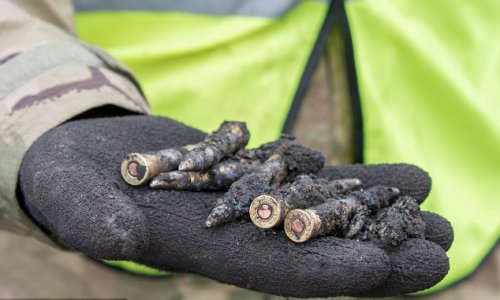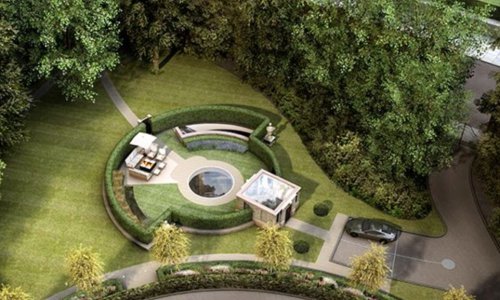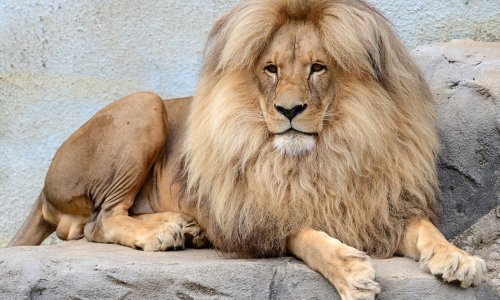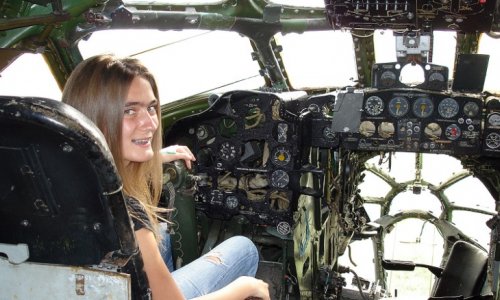Russia will stage its biggest ever military parade on 9 May, to mark the 70th anniversary of victory over Nazi Germany in World War Two.
A rehearsal in central Moscow has revealed some new hi-tech Russian armour for the first time, lifting a veil of military secrecy.
The most talked-about innovation is the Armata T-14 battle tank, described as a new-generation fighting machine to replace Soviet-era tanks.
Armata T-14 tank
The tank is highly automated - the Russian military says it could be the basis for a fully robotic tank in future.
It has a remote-control gun turret with a 125mm smooth-bore cannon that can fire guided missiles as well as shells.
The crew of three is housed in a reinforced capsule at the front, away from the firing systems.
The Armata's chassis is adaptable - it can also serve as the platform for a heavy infantry fighting vehicle, an engineering vehicle, a multiple rocket launcher and some other variants.
Russia plans to bring in about 2,300 Armatas, starting in 2020, to replace Soviet-era tanks. They are built by UralVagonZavod.
Jane's Defence Weekly says the T-14 and Russia's other new armoured systems are "principally clean-slate designs" that "represent the biggest change in Russia's armoured fighting vehicle families since the 1960s and 1970s".
Kurganets-25 mechanised infantry combat vehicle
The new Kurganets-25 comes in two main tracked variants - the BTR and BMP. Both are armoured personnel carriers, but the BMP has more powerful guns and firing systems.
The guns are remote-controlled and separated from the crew and infantry.
Jane's reports that the Kurganets-25 can be fitted with a 57mm or 30mm cannon.
The new design will replace the Russian army's Soviet-era BTRs and BMPs.
Boomerang armoured personnel carrier
This is another new infantry fighting vehicle, which also has amphibious capabilities.
The Boomerang chassis can also serve as a platform for other types of vehicle.
Jane's says the design is similar to Western eight-wheel drive military vehicles, known as 8x8. In such designs all eight wheels receive power from the engine simultaneously.
It is among the new vehicles highlighted by the Russian Defence Ministry on its website (in Russian).
RS-24 Yars intercontinental ballistic missile
The RS-24 began equipping Russia's strategic rocket forces in 2009. It is an improvement on the Topol M system.
The missile would deliver a nuclear warhead and would be fired either from a mobile launcher or a silo.
The missile has decoy systems to confuse an enemy's air defences.
Koalitsiya-SV self-propelled artillery
Koalitsiya-SV is a new self-propelled artillery system, said to be based on the Armata hull. It has a 152mm cannon and weighs about 55 tonnes.
The Russian Defence Ministry says the system can hit targets from as far as 70km (43 miles).
The weapon is designed to smash an enemy's armour and fortifications.
Buk surface-to-air missile launcher
The Buk air defence system on show in Moscow is among many variants already in service in the Russian military.
It has also been sold to several countries, including Azerbaijan, China and India.
A Buk missile was blamed for downing Malaysia Airlines Flight MH17 over eastern Ukraine in July 2014. Pro-Russian rebels are suspected of having fired the missile, as they had targeted Ukrainian military jets in the same area previously. All 298 people on board MH17 died. Russian and rebel officials rejected the allegations, arguing that a Ukrainian fighter jet was probably to blame.
Buk missile launchers are accompanied by radar vehicles. The missile can reach a maximum altitude of 25,000m (82,500ft), and can intercept cruise missiles as well as aircraft.
Kornet-D anti-tank rocket system
Russia has improved on the Kornet anti-tank system introduced in 2009.
The rockets can target not only tanks but also aircraft, the Russian Defence Ministry says. They can pierce armour plating 130cm (4ft) thick.
The targeting and guidance systems use high-resolution TV cameras, infra-red and laser technology.
(BBC)







www.ann.az
Follow us !











